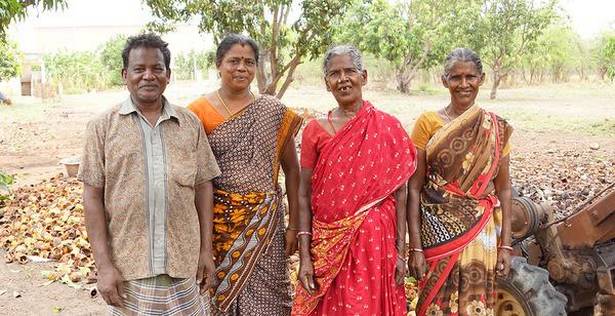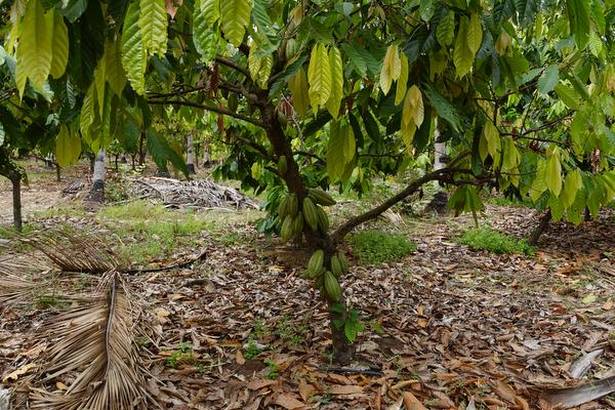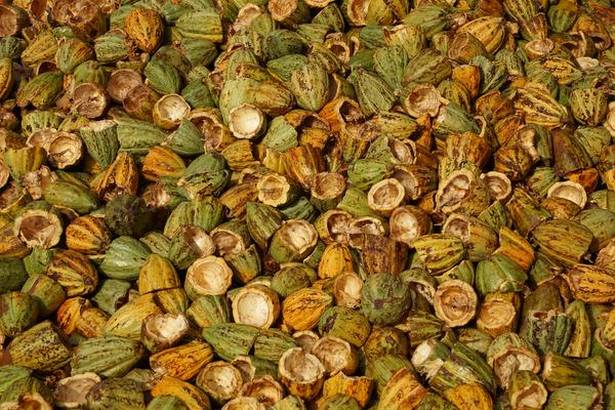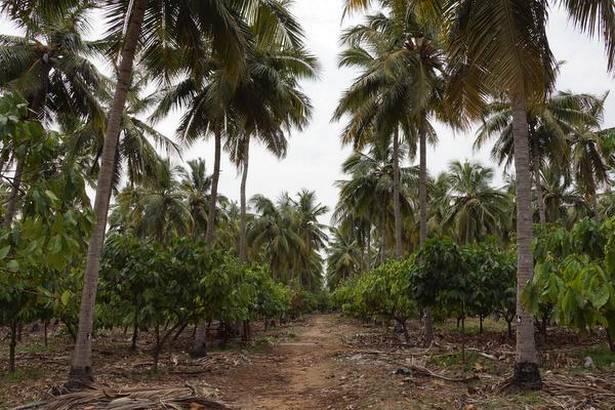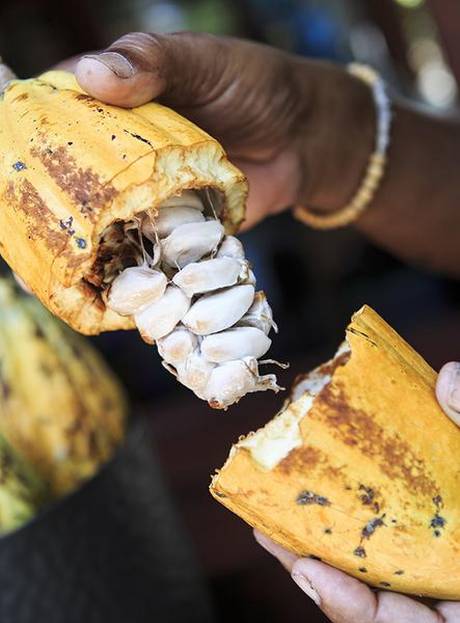
Read on to discover where your chocolate comes from,
Nagappa and his team of three usually have their hands full with cocoa pods. It is the fag end of harvest season, after all. But today, their attention is elsewhere.
Heavy showers — that were barely felt in Chennai city — hit hard on the 30-acre farm 60 kilometres away along the Tirupati highway, felling a 20-year-old mango tree near its entrance. “The farm owner, Vijay Kumar sir, is on his way from the city,” he says. His visit is a rare occurrence, so Nagappa, Kamalakanni, Meghala and Panjo are now tackling the fallen tree, hacking its parts and clearing it away. Of the 249 mango trees here, this is one they will miss everyday. Under its shade, on a rare clear patch of land, is where they spend a significant part of their day, shelling (or hacking, more like) cocoa pods.
Once he has a minute to spare, Nagappa demonstrates: He takes a plucked pod and places it on an upturned metal basket. Holding the curved, rolling fruit still with one hand, he picks up a thick, heavy stick with the other, and gives it two sharp whacks. A crack appears along the shell and he prises it open, to reveal an interior vaguely similar to that of a custard apple. It’s larger, of course, and the beans — covered in sticky sweet, white pulp — stick together in a cluster much longer. He plucks out a single little bean to taste: bite into it, and you will see a bitter, deep purple substance. That is the cocoa the world worships.
Harvest time
The farm used to have 3,000 cocoa trees. “Vardah felled many of them: we now have about 2,500 left. But we will also be planting 500 saplings brought in from Andhra,” says Nagappa. Each tree produces about 50 pods a year, a majority of them between April and May. So another part of the team’s work involves visiting each tree as often as they can, to pluck the pods before they get overripe. And how can they tell when they are just right? “You have to know each variety like your child, or they might fool you with their appearance,” smiles Nagappa. Of the four varieties, some turn helpfully yellow when ripe for plucking. Others need their harsh surface scratched by nails before they show their true colours. Yet others don’t change colour at all, “and we pluck them anyway. Especially now, with just a few weeks left in the season, they’ll invariably turn out to be ripe,” says Nagappan confidently.
He should know: he is incharge of not only the farm’s cocoa trees, but also its 250 mango trees, 400 sapota trees, 700 coconut trees and even more gooseberry (amla) trees. Some of them grow in isolated patches while others help each other out. The cocoa, for instance, can only grow in shade, and hence is planted under dense clusters of coconut trees. Large leaves of both stay untouched on the ground when shed, to fertilise the soil together.
“We start working at 8 am and wrap up by 5 pm,” says Kamalakanni, who lives on the farm with her husband while the rest go home. “We water the young trees, check for diseases and bugs, and pluck whatever is ready.” It’s not easy, when you have thousands of trees.
Once the cocoa pads are shelled, they move to fermentation. Among other clients, the farm has tied up with bean-to-bar chocolate maker Cocoatrait, which has been giving them tips on identifying different varieties, how to pluck them so as to speed up the next batch of fruit, and how to ferment. “All these factors play a big role in the final flavour of the end chocolate, so we are happy to tie up and work with farms directly,” says Nitin Chordia, founder of Cocoatrait, who has also done consulting works for farms in Andhra Pradesh and Kerala.
Inside a closed room, pungent with a sweet stench like that of cheap wine, stands a little wooden box lined with banana leaves. It is filled to 75% capacity with cocoa beans, left to heat and ferment by themselves. The box perforated with small holes to stick a thermometer in, and is unpacked regularly to shift the beans around, ensuring equal heat throughout.
But that process takes time. As the harsh afternoon sun teases them from behind wisps of cloud, the workers take a break where the shade of the mango tree once used to be: scraping coconut from its shell and popping it in their mouth. Behind them is strewn a carpet of brick red cocoa shells.
source: http://www.thehindu.com / The Hindu / Home> Life & Style> Food / by Meghna Mazumdar / May 15th, 2019
